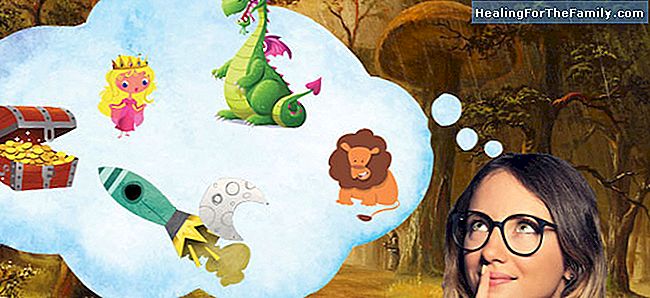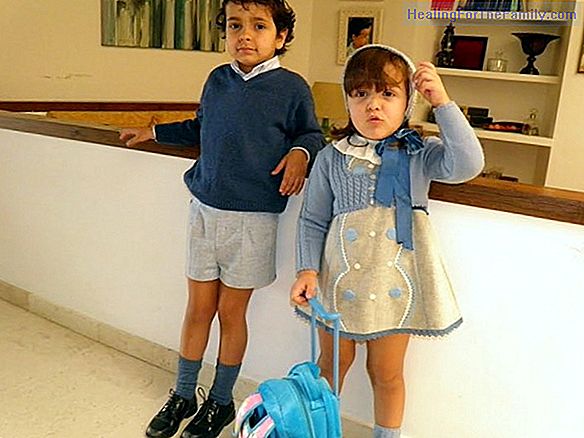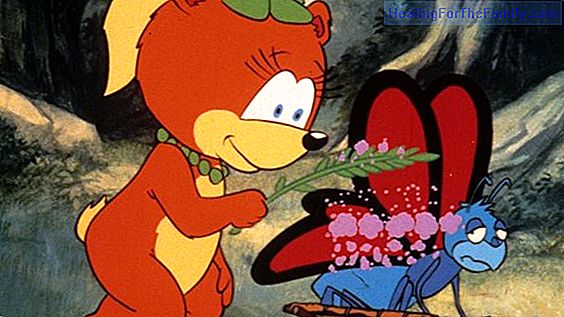How to make up a story for children in a minute
Flying giraffes that do not know how to land, bats that are afraid of the dark, or socks that their partner can not find ... there are millions of stories waiting to be taken out of our lazy minds de parents . We believe that maturity has restricted the right to let the imagination fly de, to have p
Flying giraffes that do not know how to land, bats that are afraid of the dark, or socks that their partner can not find ... there are millions of stories waiting to be taken out of our lazy minds de parents .We believe that maturity has restricted the right to
let the imagination fly de, to have parallel worlds where everything is possible, and that our inner child has long since left us to become bored adults who dream in black and white and who have a hard time smiling However, within us awaits to be awakened that child who had an overflowing imagination; and they sleep locked, behind a locked door of problems and stress, millions of stories waiting to be rescued.Tricks to invent stories for children
If you think you are not able to
invent a story

for your child every night, you are very wrong, you just have to relax, break the ties to the ground and use these little tricks I will leave; In a few weeks you will be the best storyteller your children have seen. Welcome to the magical world of the imagination! 1- If your mind is a bit stiff and you do not know where to start, the easiest thing is that you start
turning over the usual stories
. Locate the characters in another historical era, and even in another context, for example: Snow White's stepmother does not have a magic mirror but a state-of-the-art cell phone that tells you everything you need to know through the internet; Little Red Riding Hood lives in a big city and her grandmother is a Kung Fu teacher for wolves that have lost their teeth and can not defend themselves. 2-Change the role of the characters
of the stories, and tell the story from the perspective of other characters; for example you can explain that the wolf had to eat the three little pigs, since he had a wolf mother at home and five little wolves that he had to feed, so you can teach the children that we all have our reasons to do something and you will that the children empathize with each character. 3- Disconcert the child with unexpected facts
of the traditional characters. That is, the sleeping beauty is expected to fall asleep after being punctured with the use of the spinning wheel, but what if it is the prince who pricks himself and the sleeping beauty who saves him with a foot massage? 4- Create illogical associations.
Join a rocket and a tomato, and see what comes out, or a castle and a whale. The more absurd the characters, the funnier the story will be and the more you will let your imagination fly. 5- Tell the child to propose a character m and enter it into your story. The new character will represent the child and so you can put him in compromised situations, make him go through problems that he will have to solve. The child will identify with the character, with what you can take advantage of the pull and teach him something important that solves a problem he has had during the day.
6- Choose any character and turn it into an object . For example, one day Pepito gets up and checks that his father has become an artichoke. What will happen?
7- Use Invented vocabulary, your child will laugh. Imagine new names for new things and you can even put suffixes and prefixes to normal things to give them different qualities, for example: megasofá, desbañera, bisilla.
8- Create impossible machines, children love them. Machines that do strange things like a machine that ruffles dogs, or that creates clouds of colors in the sky.
9- Mix charactersfrom different stories and make them talk to each other but with traditional roles. Little Red Riding Hood finds Peter Pan instead of the wolf and asks: are not you going to eat my grandmother ?, and Peter Pan responds: no, I came to take her to the country of Neverland!, To which the grandmother Answer: not to mention that I have the lentils in the fire and they are going to burn me!
10- It is also very useful to put a moral at the end of the story to teach the child something. In those cases, think first of the teaching you want to tell and then you just have to add some characters around, with a problem that is only solved through the moral.












